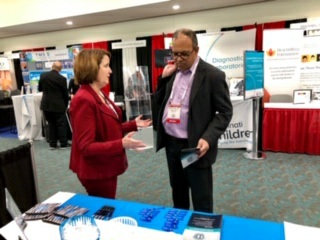Hematology Resources
ECD is an ultra-rare type of blood cancer that is difficult to diagnose and can manifest in a variety of complex ways. With Erdheim-Chester Disease likely being underdiagnosed it is imperative to raise awareness around the world, especially in the medical community. Hematologists, together with other clinicians, pathologists, and radiologists, play a vital role in identifying ECD. If doctors can accurately and quickly recognize ECD in a patient, there are viable FDA-approved and off-label treatments available to improve quality of life, slow the progression of the life-threatening disease, and in some cases, even possibly reverse the damage done by the disorder. The key to a successful or more positive outcome is early diagnosis.
Thank you to the medical professionals that provided the information and reviews in order to support the awareness efforts of the ECDGA. Your dedication to the community will make a difference in the lives of patients and families everywhere.
Key Points for Hematologists
- None of the pathologic changes are unique to ECD – clinical and radiographic features are key to diagnosis.
- A high index of suspicion for ECD in patients with typical “hairy kidney”, retroperitoneal, or bone involvement, especially if concomitant diabetes insipidus.
- Very important to pursue PET-CT scan from vertex to toe (whole body) to capture diamethaphyseal involvement around the knee joint and investigate for multi-organ involvement.
- ECD may coexist with Langerhans Cell Histiocytosis (LCH) or myeloid neoplasm.
- Molecular studies increasingly play a role in diagnosis and management.
ECD-Experienced Hematologists
Ronald S. Go, MD
Email: go.ronald@mayo.edu
Gaurav Goyal, MD
Email: ggoyal@uabmc.edu
Paul Hendrie, MD, PhD
Email: phendrie@uw.edu

